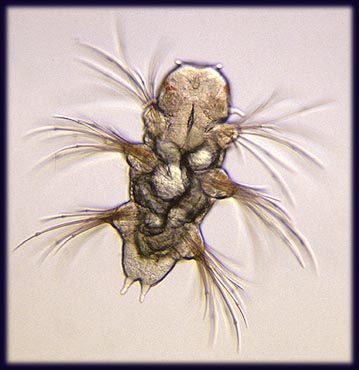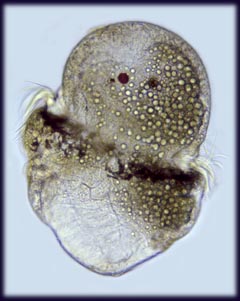Polychaetes have a variety of ways of reproduction. Asexual reproduction does occur. In some species a rather peculiar way of sexual reproduction has evolved. At the tail end the segments slowly change into new organisms. These sexual organisms bud off to form special sexual versions of the organism. These have larger eyes and swim to more open water to find a partner to mate. Then the eggs are fertilised. The first larval stage of a Polychaete is a so-called Trochophore larva (right image). It is a real specialists work be able to identify to what species it belongs to since many species have almost identical trochophore larvae.  |
 | |
The left image shows that the bristles (or chaetae) are implanted in the body. With the use of muscles the animal can move the bristles backward and forward. Two reddish eye spots are just visible. Behind the mouth lies a structure typical for a large group of organisms. This pharynx is a sucking device that exists in creatures like Nematodes, Rotifers, Tardigrades, indicating they may share a common ancestor. | ||